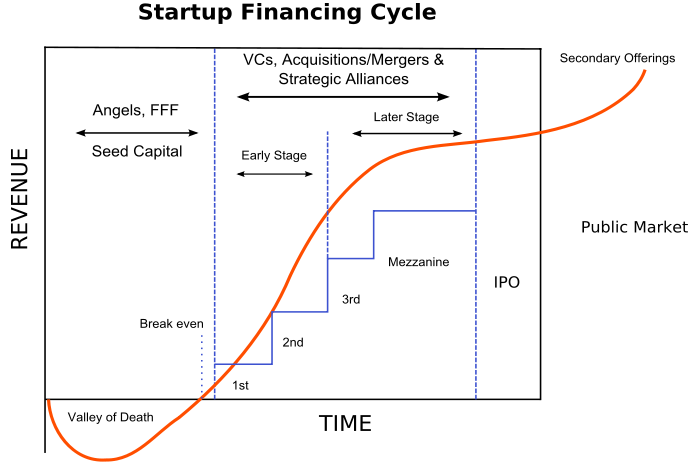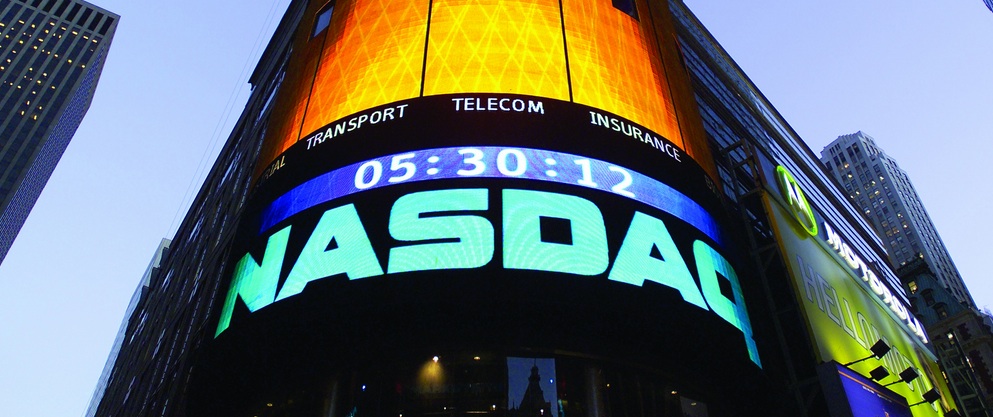Understanding differences in startup financing stages
Category: Understanding startup investment
CrowdfundinginvestorsSeed capitalStartup stagesstartupsSyndicates
The startup funding landscape has changed significantly over the past few years in Europe. While five to ten years ago the options available to startups were few, lately we’ve witnessed an important surge in Venture Capital available for startups at all stages. From seed to growth, from Series A to Series C.
This increase in capital has been accompanied by the creation and development of alternative financing vehicles such as crowdfunding, investment syndicates and new and fresh Venture Capital firms that bring different approaches to the market. With this post we’ll analyze what types of fundraising vehicles are being used at the different stages of a startup’s life.
Startup financing at the early stage
Pre-seed capital
You have an idea, maybe a working prototype and are looking for funding that will allow you to focus on your project full time. Pre-seed capital tends to cover the first stage in the life of a startup and is often compromised of three main sources of financing:
– FFF (Fools, friends and family): the three classical Fs that at Startupxplore we’ve explained and provided with their very own FFF profile.
– Business angels: previous startup founders who have had exits and decide to invest the money in other startups (or their own) or investors that despite not having a tech-related background decide to back companies in the space, given their potential growth and current market situation. Contrary to Venture Capital firms, business angels often invest their own money and at one of the most riskiest stages for startups, thus their importance in every single startup market.
– Accelerators: five years ago there were barely any startup accelerator programs in Europe (with the exception of Seedcamp and a few others), but these days there’s an accelerator in every single big European city. These organizations provide capital, mentorship and office space to teams in exchange for 5 to 10% of equity. TechStars, Startup Sauna, Plug and Play Valencia / Berlin, SeedRocket or the aforementioned Seedcamp are some of the most popular European accelerators.
Seed capital
Seed capital can be described as the capital necessary to start a company and to try to find product-market fit. European seed rounds range from €250K to €750K or €1 million. The main providers of capital at these stage are business angels, super angels and early stage Venture Capital firms. However, in recent years more players have joined the game in Europe and are, in theory, improving the ecosystem.
– Crowdfunding: there are two types of crowdfunding that are closely tied to startup investing. For hardware startups and creative projects there’s what’s often called ‘reward-based crowdfunding’, where sites like Kickstarter and Indiegogo are global leaders. Users can back the projects they like and get something material in return (physical or digital products and services), receiving no equity from the teams or companies providing such goods.
The other kind of crowdfunding that’s relevant for startups is equity crowdfunding. As the name indicates, in this instance backers (investors) of the companies get equity in return, thus becoming shareholders of the companies and being able to participate in the future returns the startups might be able to provide to investors. This type of investing is often carried by platforms that serve as aggregators, choosing startups and inviting backers to invest in them through the platform, which get to charge a fee per deal closed.
Finding the right startups and investors was never this easy. Give it a try at Startupxplore!
There are a wide variety of equity crowdfunding platforms in Europe, but the most popular are Seedrs, Companisto and FundedByMe. It’s interesting to highlight that equity crowdfunding regulation varies from country to country within Europe, which can be a hurdle for investors and startups interested in raising money this way.
– Syndicate investing: the idea of a syndicate is to let angel investors syndicate deals with each other. This means that angels with good track records can lead investments in early stage startups and allow other angels to co-invest, providing additional capital to the financing rounds. The advantage for the three parts involved are simple to understand:
- Lead angel investors get to choose the startups they want to invest in and don’t have to face the burden of providing all the capital.
- Angels that join in don’t have to select the startups if they trust the criteria of the lead angel investors.
- Startups can get more money than usual, faster.
Angel syndicate platforms such as our very own Startupxplore and AngelList charge a fee per deal closed and create platforms where startup investors and companies can meet each other.
Startup financing at the growth stage
Series A
Startups that get to this stage have usually figured out their product, the size of the market and need capital to scale, improve distribution systems or establish a business model if they don’t have one yet.

Typical European Series A rounds range from €2 to €5 million, according to a report from Stephen Piron, and are led by traditional Venture Capital firms that end up owning between 15 and 30% of the invested startups. Series A and previous stages are the riskier for investors, given the doubts surrounding the startups, their products and their teams. Although it might seem that Series A deals in Europe are abundant, it’s worth mentioning that “only 6% of European companies managed to secure an A round” since 2009.
Series B
As Elad Gil explains in his blog post about startup financing, Series B are “all about scaling”. Successful startups at this stage tend to have an established user base and a business model that is working.
Series B in Europe usually start at €6 million and can be has high as €8 to €10 million. As highlighted in the aforementioned report, “Series B deals in Europe remained flat from 2009 to 2014 while they grew 37% in the US”. In other words, Series B deals are not as common in Europe as in the US and tend to be led or include the participation of US-based VC firms.
Series C and following rounds
When companies reach this stage they’re fully mature. Business model is working -whether the company is profitable or not-, user base is expanding and acquisitions might be in the crosshairs of the executives leading these companies.
Financing rounds at these stages tend to range from tens to hundred of millions. A clear difference between Series C and other rounds, besides the amount being invested, is that at this point private equity firms and investment banks tend to be the lead investors, with the participation of large Venture Capital firms. From this stage on the outcome tends to be an IPO or to get acquired by a much bigger company.









